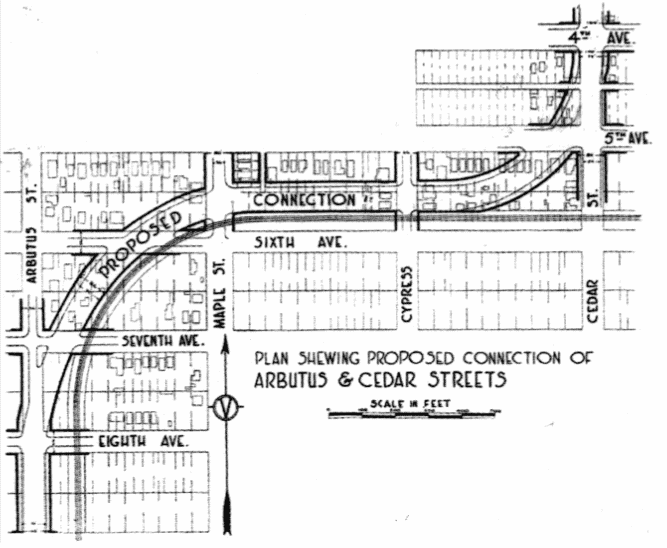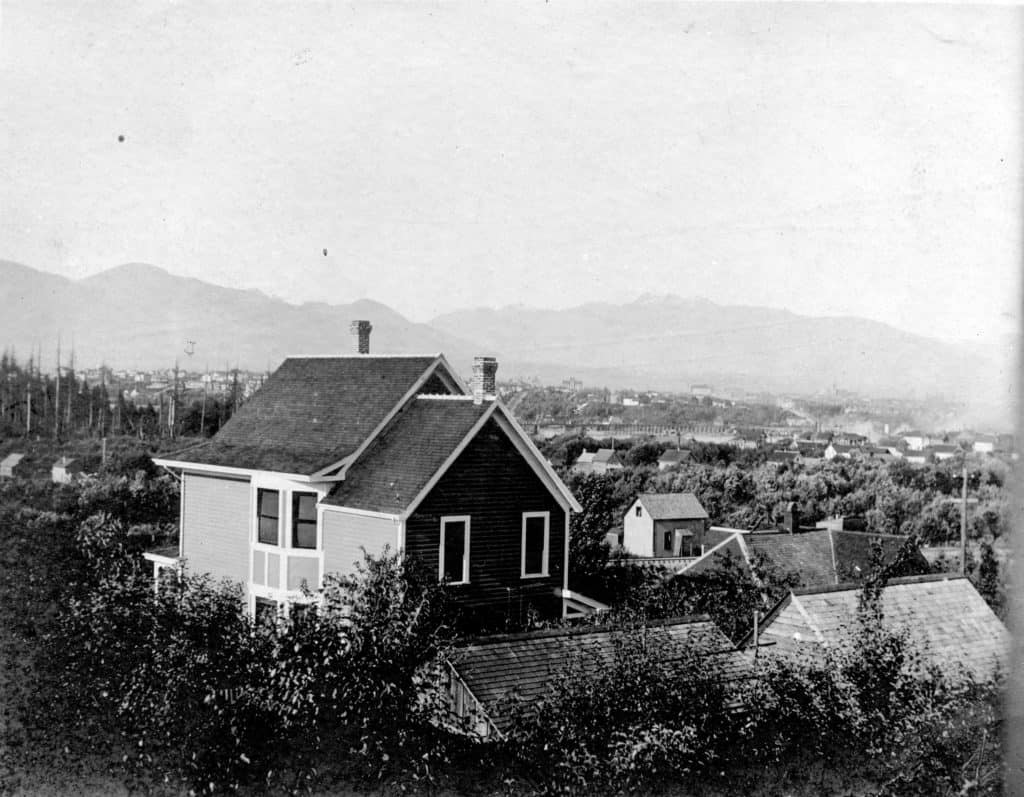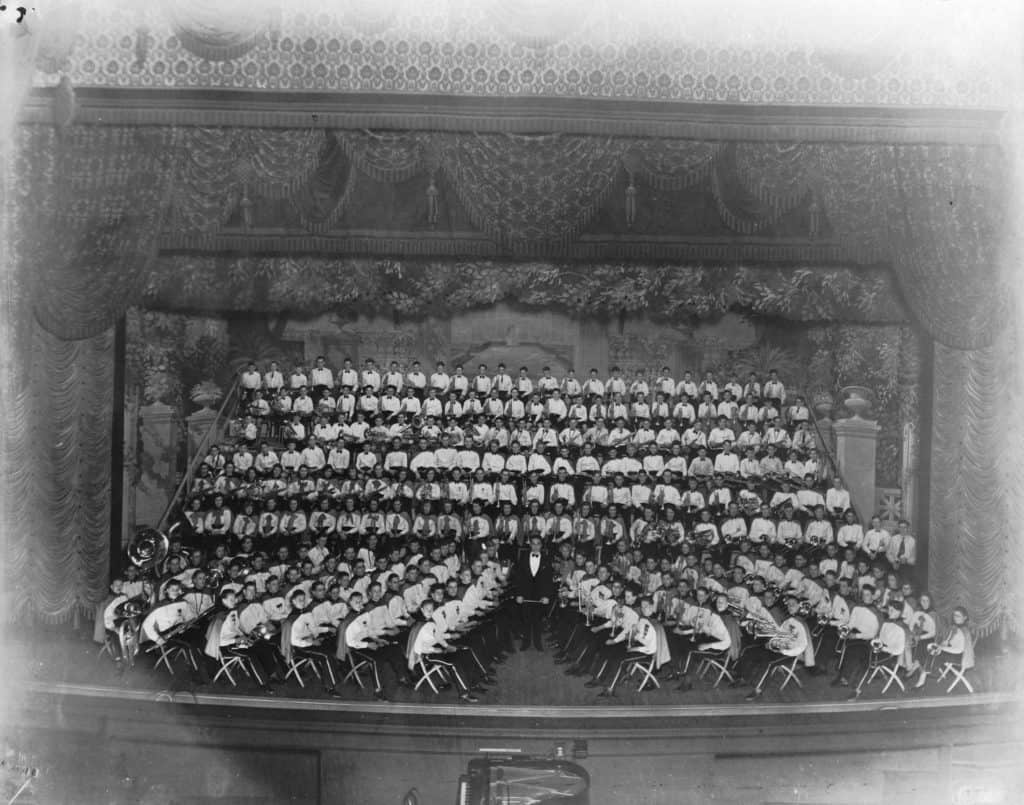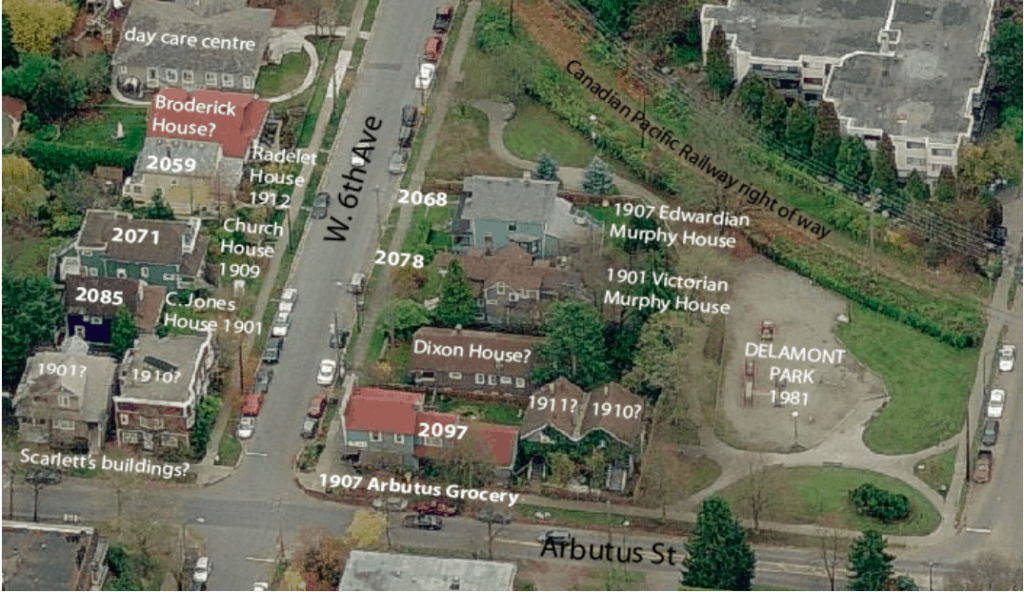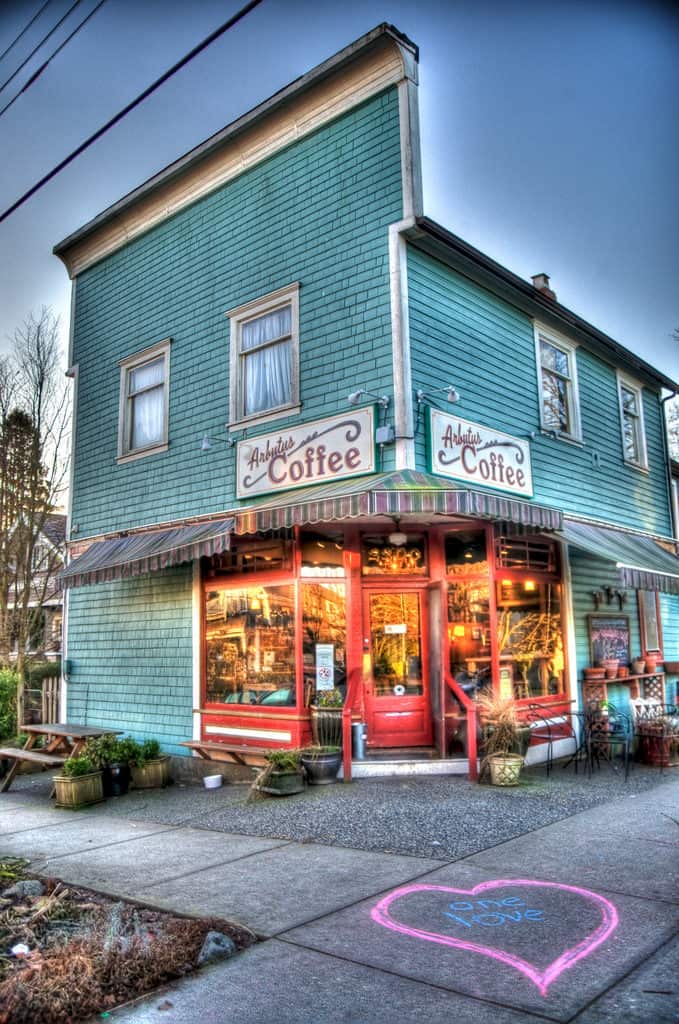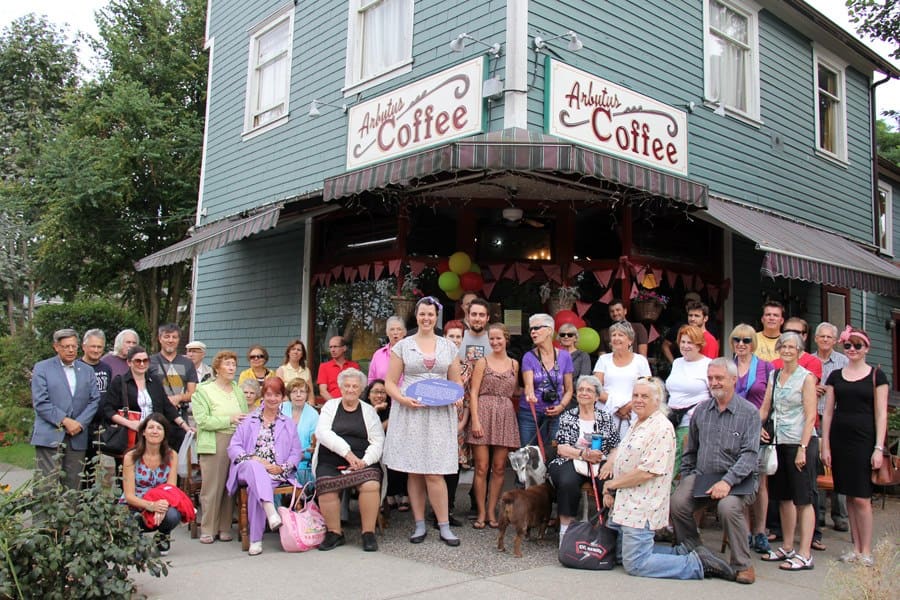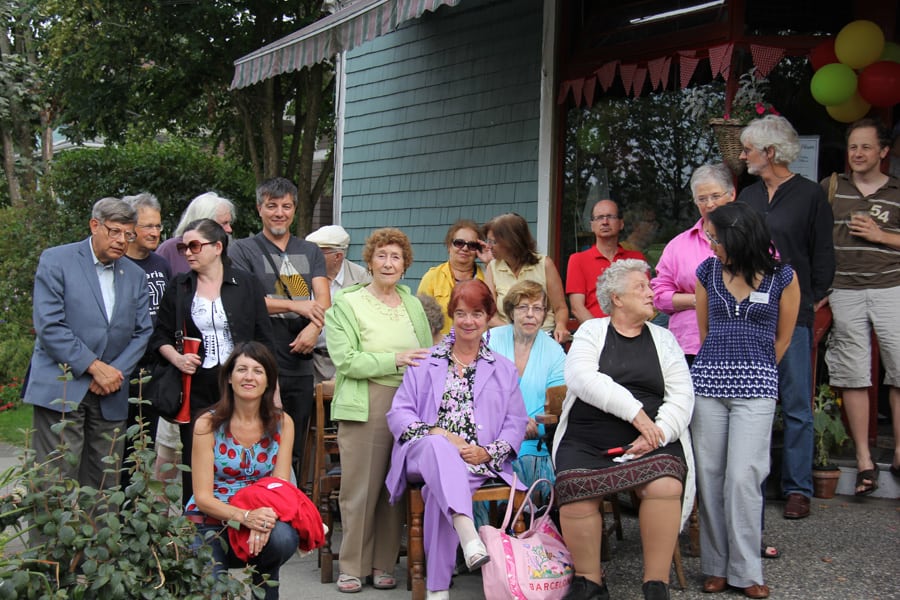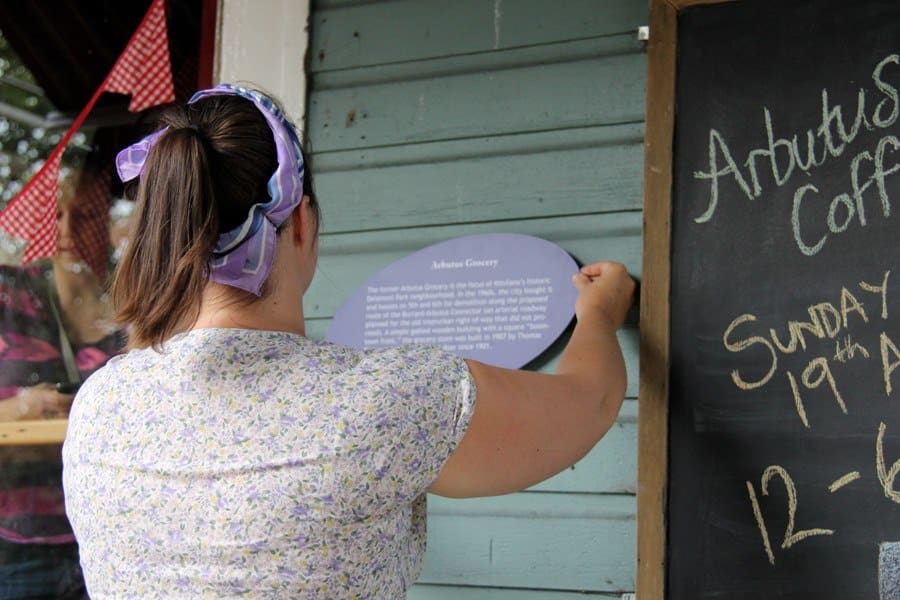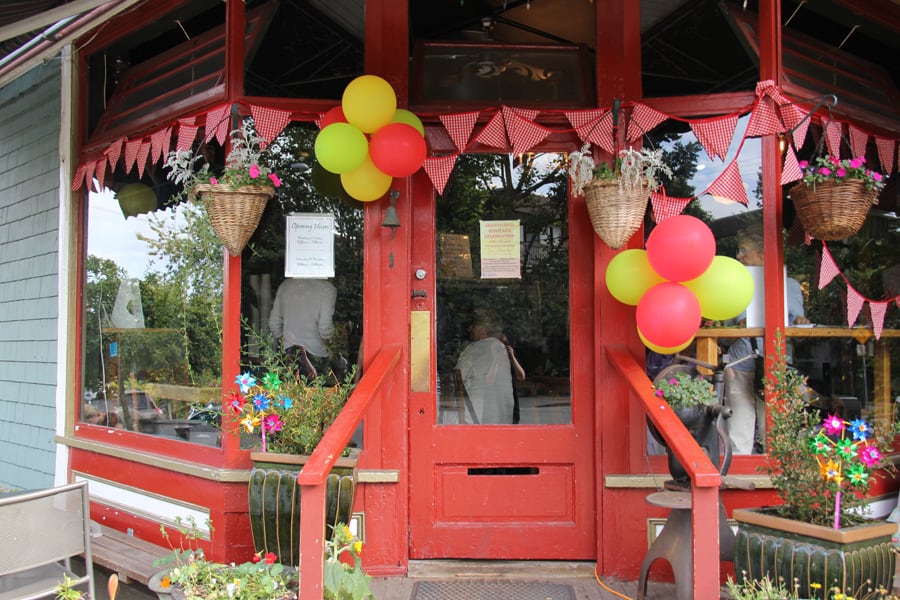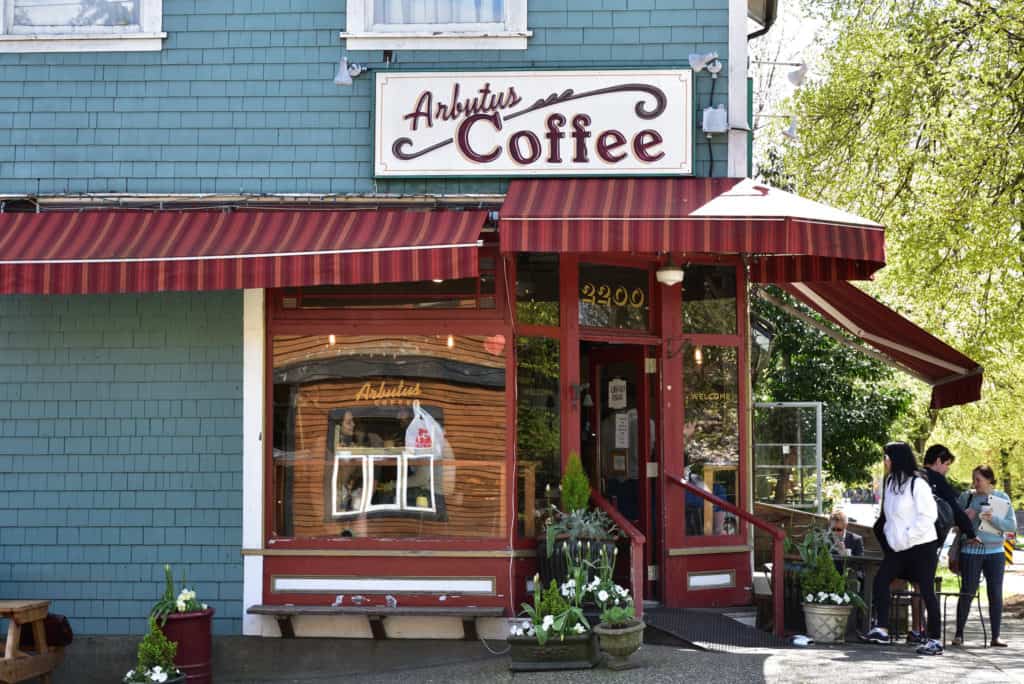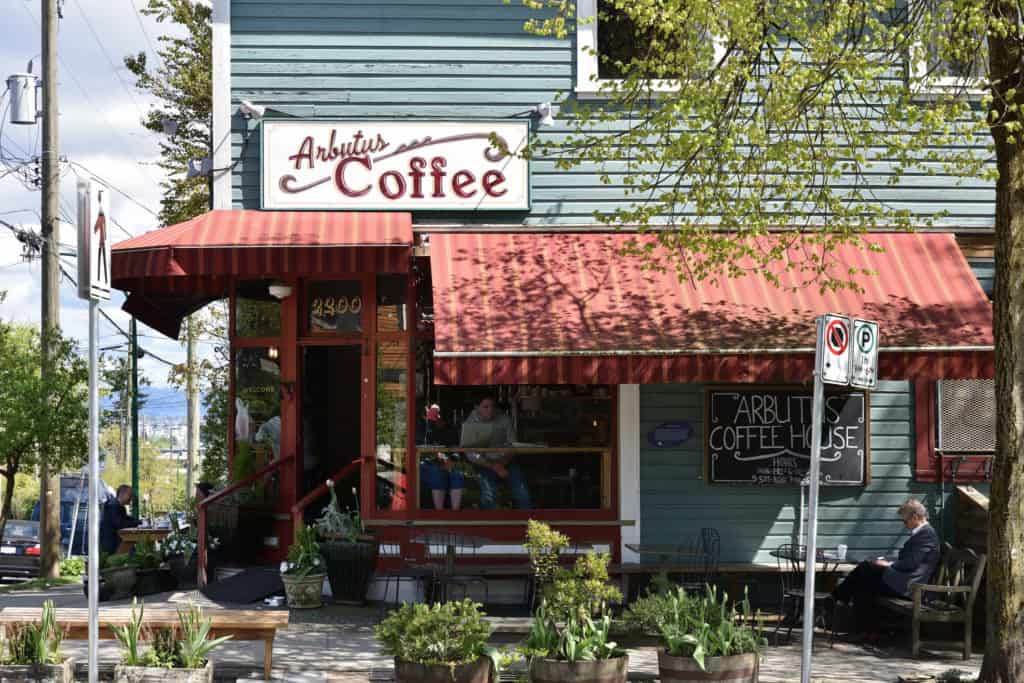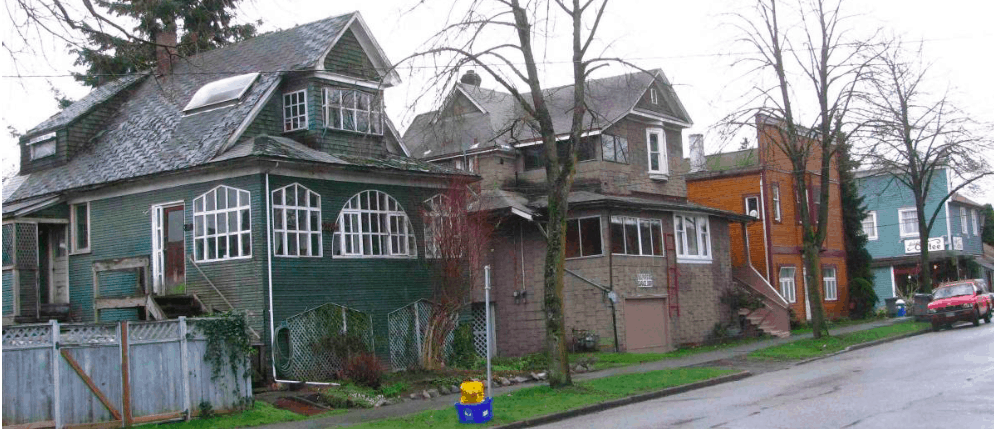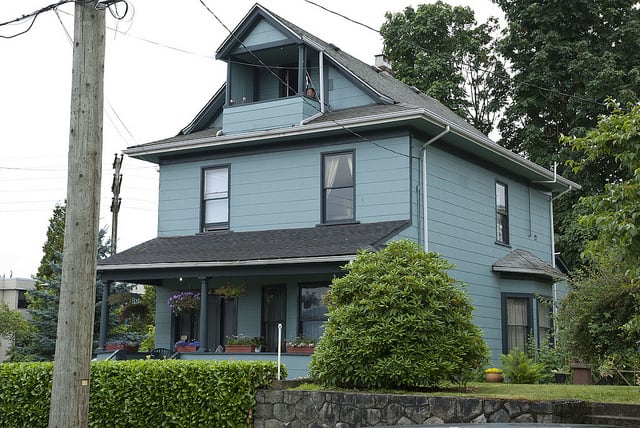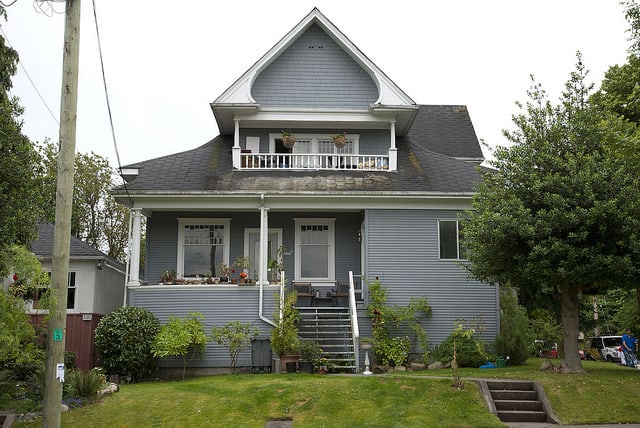The Arbutus Grocery
This grocery store turned coffee shop was built by Thomas Frazer in 1907 at 2200 Arbutus Street and was originally called the Eureka Confectionery. Frazer, one of the first settlers in the area, lived in a bungalow next door which he had built in 1901. The building is the oldest remaining grocery storefront in Vancouver and is listed as an ‘A’ category building on the Vancouver Heritage Register. It features an old-style western ‘boomtown’ front, a style developed in the California Gold Rush of 1849 era, when frontier merchants wanted to make their modest stores appear more imposing. (See also, the Scarlett Apartment Building from 1910 across the street, as well as Western Front Society.)
Kitsilano’s Historic Delamont
Arbutus Coffee is the most identifiable landmark of Kitsilano’s historic Delamont Park, a micro-neighbourhood (named for Arthur Delamont, the founder of the Kitsilano Boy Band) containing what is now the oldest predominantly intact group of houses in eastern Kitsilano, the earliest of which were built in 1900-1901. Many of the homes retain original woodwork, bathtubs and design elements and 15 have been evaluated with Statements of Significance as having substantial heritage merit, both individually and as a grouping. This residential area emerged at the turn of the twentieth century, and development was stimulated by the opening of the 1905 B.C. Electric Railway interurban to Steveston.
Decades of Community Protection
In the 1930s, city planners identified the area as an ideal route for a highway connector from Broadway to Burrard. The plans were put on hold after backlash from residents upset with the proposed home demolitions and the disruption of their neighbourhood. By the late-1960s, eastern Kitsilano was aging, and many older homes were rented cheaply to groups of young people – including many artists drawn by low rents and Kitsilano’s then thriving hippie culture (whose unofficial crossroads was at nearby 4th and Arbutus). Meanwhile, the area had been rezoned, leading to the development of modern low-rise apartment buildings in the surrounding blocks. Around that time, the city began purchasing houses in Delamont with the intention of renewing their plan to build a highway connector. After their efforts were yet again blocked by citizen-led protests, they considered transforming the community into a park. They succeeded in developing a few lots into Delamont Park, but most of the century-old houses were spared.
“The City had purchased the houses in Delamont with the intention of demolishing them, but the failure to build the Burrard-Arbutus connector or to construct the larger Delamont Park ironically eventually led to their conservation as the oldest group of buildings in Kitsilano,” writes Bruce Macdonald, an expert on Delamont’s history. Macdonald says this mirrors the Mole Hill story – when the city acquired a block of West End houses to expand Nelson Park, but a backlash led to the homes being protected and rehabilitated instead. Macdonald said that Delamont’s involvement in community backlashes against “top-down city hall policies” played a historic role in the development of community planning in Canada. “Delamont and Strathcona’s 1969 citizen uprising against proposed demolition of whole city blocks of their homes for the construction of freeways caused the cancellation of nationwide funding for such projects.”
On August 19, 2012, we celebrated Arbutus Grocery (now Arbutus Coffee) history with a 1950s theme.
Arbutus Coffee continues to serve the neighbourhood. “In 2002, the coffee shop opened in its existing incarnation intent on being a comfortable, easygoing addition to the neighbourhood – a casual place with great coffee, great baking and most importantly, an ambient atmosphere to tie it all together. Beginning in December of 2007, in an effort to increase our profile as a coffee emporium, the operating name of the company became Arbutus Coffee and with that came a few small changes. ”
- Vancouver building permit registers
- A Plan for the City of Vancouver, Harland Bartholomew & Associates, 1928.
- Derek Hayes. Historical Atlas of Vancouver and the Lower Fraser Valley. Vancouver: Douglas & McIntyre, 2005, p. 122.
- Michael Kluckner and John Atkin. Heritage Walks Around Vancouver. Vancouver: Whitecap Books, 1992
- Michael Kluckner. Vancouver The Way It Was. Vancouver: Whitecap Books, 1993, p. 100
- Bruce Macdonald. “Kitsilano’s Historic Delamont.” 2013.
Nearby Places That Matter



